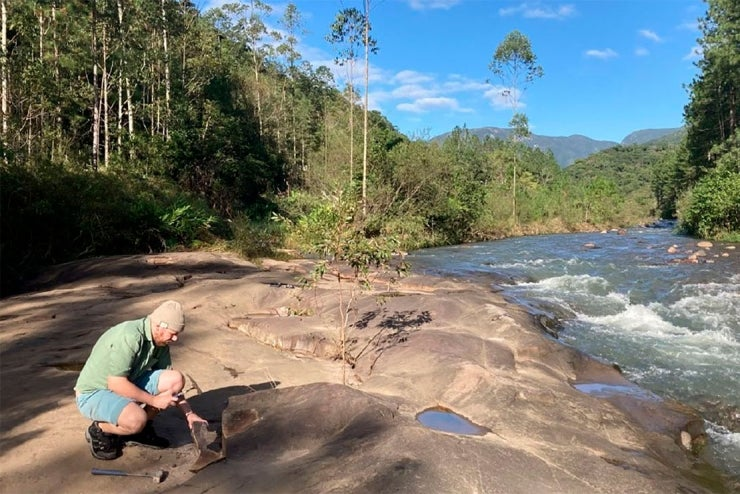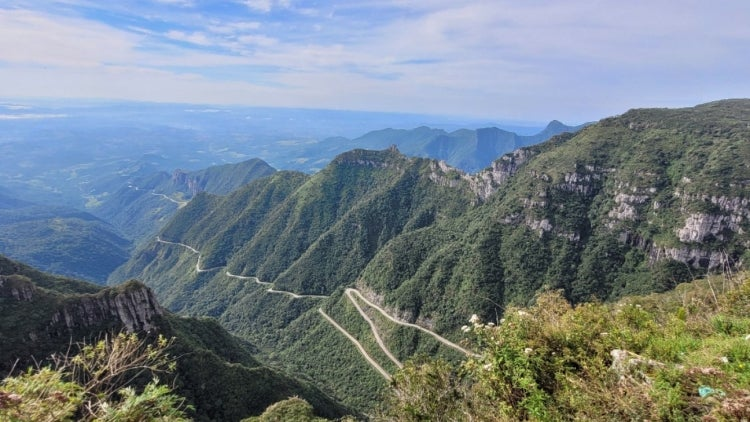Rock strength has a significant impact on erosion and plays an important role in shaping the Earth's landscapes, according to research led by experts at the University of Toronto Mississauga.
In a study published in Science Advances, the team - which also included experts from the University of Vermont and Universidade Federal do Rio Grande do Sul in Brazil - demonstrated that the type and resistance of rocks can drive a whopping 20-fold variation in erosion.

U of T Mississauga PhD student Mauricio Haag samples rock exposure along an escarpment-draining river as part of a study that shows the importance of rock strength in the evolution of landscapes (photo courtesy of Mauricio Haag)
The findings are based on investigations carried out along a 200-kilometre stretch of land along the southeast coast of Brazil. The region was selected for its relatively stable climate and tectonic activity, which allowed researchers to hone in on the impact of rock strength.

The Rio do Rastro section of the Aparados da Serra Escarpment in southeast Brazil (photo courtesy of Mauricio Haag)
"The hypothesis is that if rock strength matters, we ought to see a correlation between rock strength and erosion rates," says Lindsay Schoenbohm, a professor of Earth sciences in U of T Mississauga's department of chemical and physical sciences. "Harder rocks should equal slower erosion rates."
To test their hypothesis, the researchers measured erosion rates by analyzing river sediment and the amount of beryllium-10, a radioactive isotope that forms when cosmic rays interact with Earth's atmosphere and surface.
Mauricio Haag, lead author of the study and a PhD student in Schoenbohm's group, likens this process to getting a tan: the longer a rock face is exposed, the more beryllium-10 accumulates in its mineral grains, much like how prolonged sun exposure darkens the skin.
To measure rock strength, the team used a device called a Schmidt hammer that measures the "rebound" of a spring-loaded mass as it impacts a surface. The stronger the material, the more it rebounds - similar to how a basketball bounces higher on an asphalt driveway than on a grass lawn.
The study found stronger correlations between bedrock strength and rates of erosion than reported in previous experiments.
These results underscore the role that rock strength plays in crafting landscapes like the Rockies or the Great Plains; while plate tectonics are known to raise mountains and erosion - driven by glaciers, rain and wind - wears them down, the study sheds new light on the role of rock in this process.
The researchers compiled their findings into a publicly available database of rock-strength measures, nicknamed Thor, which they hope will prove useful for people studying climate or tectonics to help ensure they're not overlooking the effects of lithology.
The data also holds implications in realms such as agriculture, land management, conservation strategies and infrastructure stability.
"We created it for people like us, initially - people who are looking at erosion rates in landscapes," Schoenbohm says. "But I think the applications could be extremely broad."













